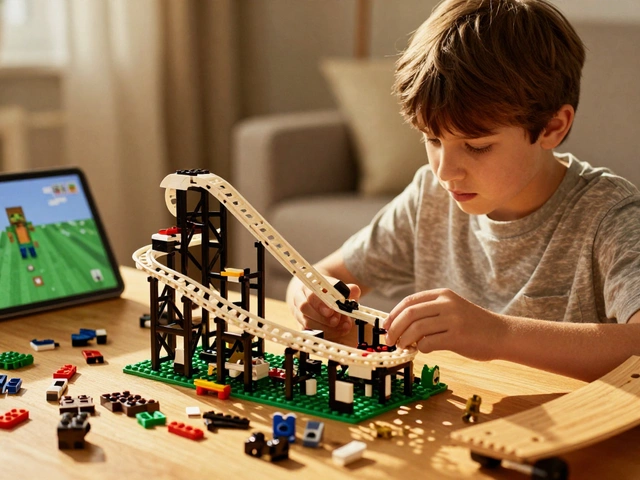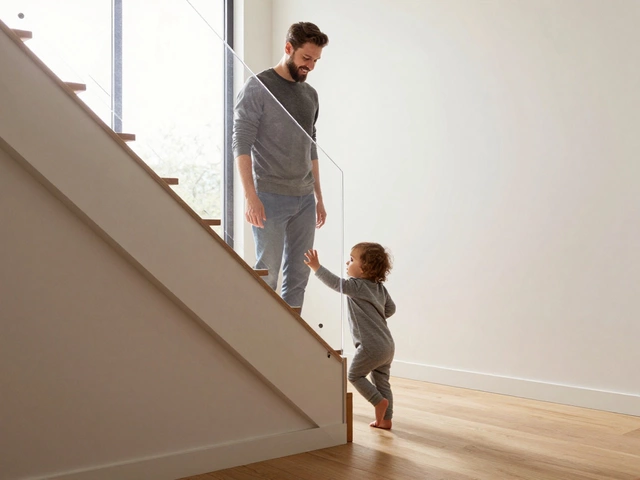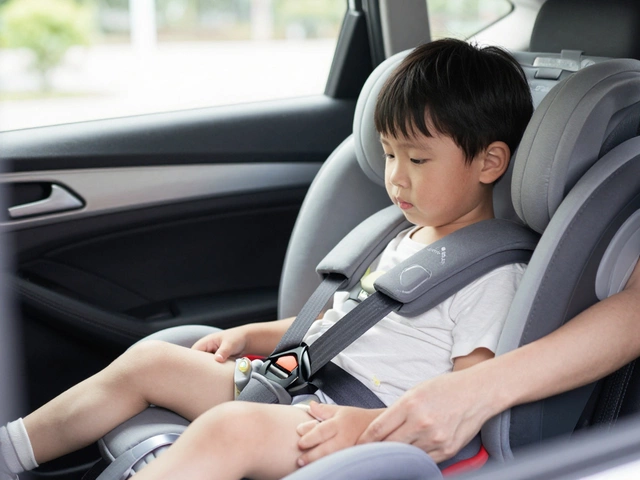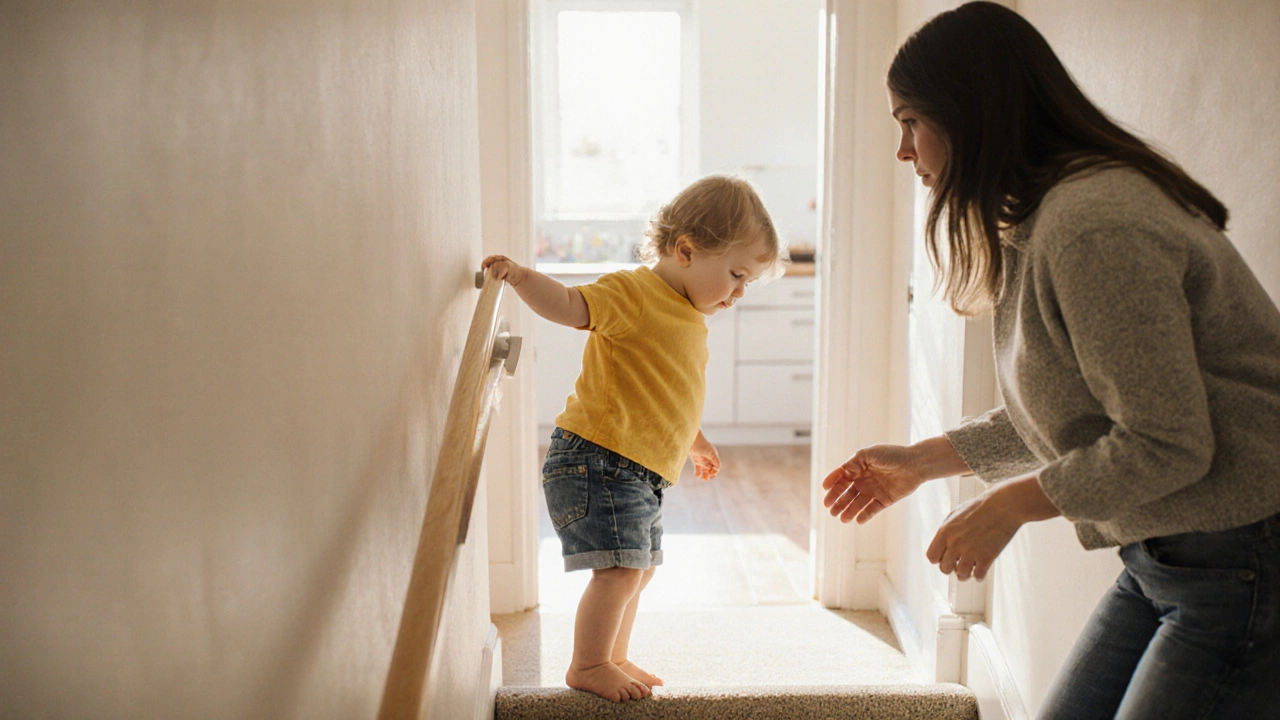
When your little explorer hits the two‑year mark, you might wonder whether a baby gate is still necessary. The answer isn’t a simple yes or no - it depends on your home’s layout, the child’s mobility, and the level of supervision you can provide. This guide walks you through the key questions, safety standards, and practical tips so you can decide if a gate is the right move for your family today.
Why Safety Changes at Age Two
At 24 months most toddlers are mastering several new skills: they can walk up and down stairs confidently, pull themselves up on furniture, and reach for objects on high shelves. According to the UK National Health Service, falls are the leading cause of non‑fatal injuries for children under five, with a sharp rise once they start tackling stairs. This developmental leap means the areas that were once safe when they were crawling become potential hazards.
Understanding these milestones helps you spot the moments when a gate could prevent a serious accident. Below we’ll map common behaviours to specific risk zones in a typical home.
When a Gate Might Be Needed
Here are the most common scenarios that signal it’s time to childproof with a gate:
- Toddler can climb stairs without adult help.
- Open doorways lead to rooms with heavy furniture, breakable items, or hot water heaters.
- Unsupervised access to the kitchen while cooking is a daily risk.
- Family members use a hallway as a shortcut, creating a traffic bottleneck that’s unsafe for a small child.
If any of these ring true, a gate becomes a low‑cost, low‑maintenance safety layer that buys you precious seconds to intervene.
Types of Baby Gates and Their Best Uses
Not all gates are created equal. Choosing the right design can make installation easier and safety higher.
| Gate Type | Installation | Weight Limit | Best For |
|---|---|---|---|
| Pressure‑Mounted Gate | Fits between door frames without screws; uses tension. | Up to 30kg (66lb). | Doorways and hallways where drilling isn’t allowed. |
| Hardware‑Mounted Gate | Screwed directly into wall studs or banister. | Up to 50kg (110lb). | Top of stairs or high‑traffic entry points. |
| Walk‑Through Gate | Two‑door swing style; mounting similar to hardware‑mounted. | Up to 45kg (99lb). | Large openings like kitchen‑living room transitions. |
For most two‑year‑olds, a hardware‑mounted gate on stairs provides the strongest barrier. If you rent, a pressure‑mounted option works well for doorways, but be sure it meets the required tension level - a loose gate can become a tripping hazard.
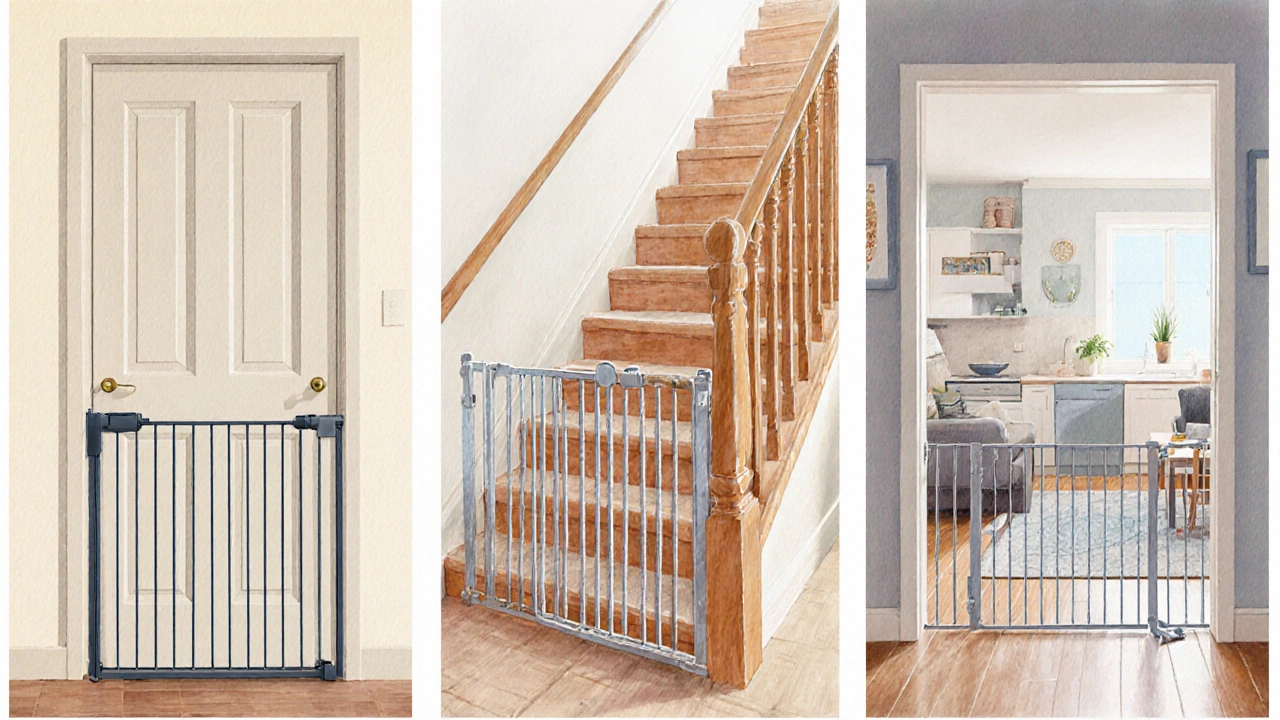
How to Choose the Right Gate for Your Home
Follow this quick decision checklist:
- Identify the entry points you need to block (stairs, kitchen, bathroom).
- Measure the width of each opening. Most gates cover 28‑36inches; wider openings may need a custom solution.
- Check wall material. If you have plaster or brick, a hardware‑mounted gate will need appropriate anchors.
- Consider the gate’s material - metal provides durability, while wood blends with décor.
- Look for compliance with British Standards BS 8300, which sets safety and load‑bearing requirements for child‑protective equipment.
When you tick all the boxes, you’ll have a gate that not only fits but also passes the legal safety benchmarks trusted by UK parenting groups.
Installing Your Gate Safely
Even the strongest gate can fail if not installed correctly. Here’s a step‑by‑step guide:
- Read the manufacturer’s instruction manual thoroughly - every model has unique screw lengths or tension settings.
- Locate wall studs using a stud finder; mark the drilling points with a pencil.
- Pre‑drill pilot holes to avoid cracking plaster.
- Insert the provided wall anchors; tighten screws until the gate feels solid but still moves smoothly.
- Test the gate by applying pressure equal to a child’s weight (around 20kg for a two‑year‑old). It should not wobble or give way.
- Check the latch from a child’s eye level - it must be operable by an adult but out of reach for a toddler’s fingers.
After installation, walk the gate’s entire length with a gentle push. If anything feels loose, re‑tighten the screws before letting your child explore the area.
Alternative Safety Measures to Combine with Gates
While a gate is a key line of defense, layering safety gives the best protection:
- Furniture anchors - Secure bookshelves and TV stands to the wall.
- Corner protectors - Cushion sharp edges on coffee tables and low shelves.
- Non‑slip mats - Place them in the bathroom and kitchen to prevent slips.
- Supervision schedule - Even the best gate can’t replace attentive adult oversight.
When you combine these tactics, you create a “safety net” that covers both motion‑related and static hazards.
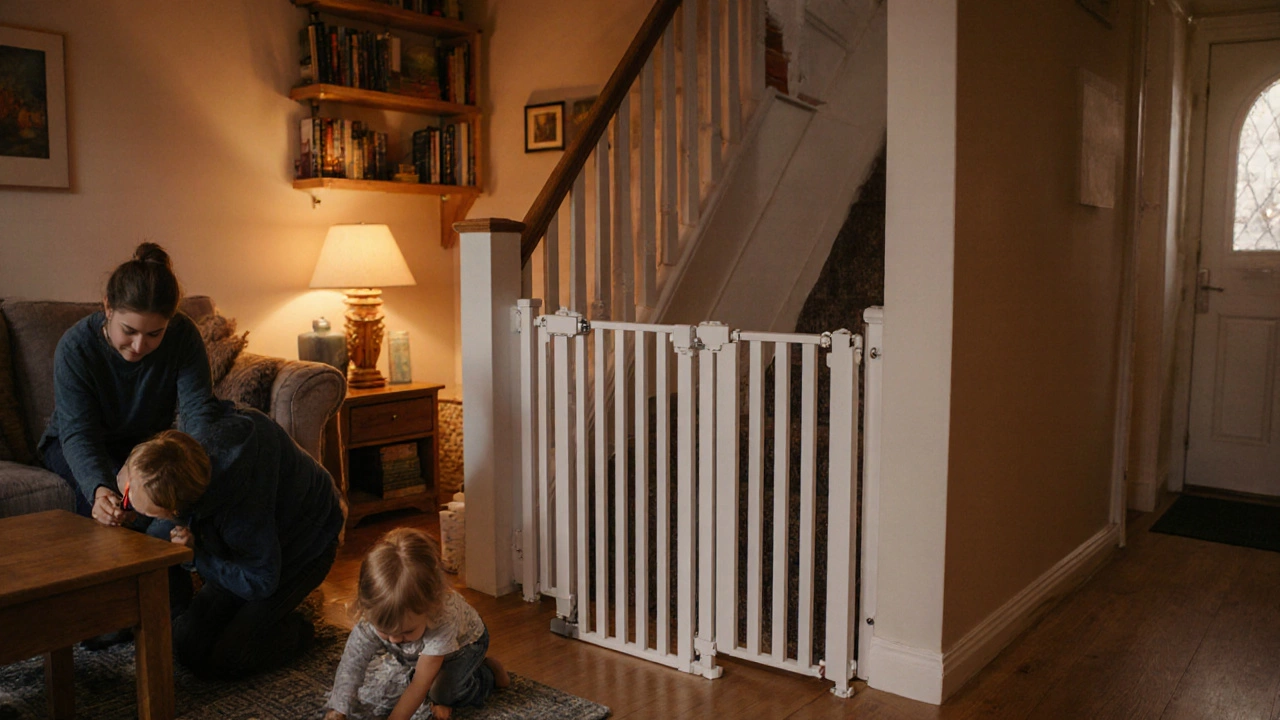
Quick Safety Checklist for Parents of Two‑Year‑Olds
Print or bookmark this list and run through it each week:
- Gate installed on all stair entrances and kitchen doorway?
- Gate latch tested for proper operation?
- All furniture anchored securely?
- Electrical outlets covered?
- Hot liquids kept out of reach?
Mark anything that needs attention with a red sticky note - visual cues help you stay on top of childproofing as your toddler grows.
When to Remove the Gate
Most children outgrow the need for a gate by age three or four, once they can follow basic safety rules and understand “stop.” Keep an eye on these signals:
- Consistently respects adult‑set boundaries without prompting.
- Can navigate stairs with a handrail safely.
- No longer attempts to climb over the gate.
If your child shows these signs, you can start removing the gate gradually while monitoring for any regression.
Frequently Asked Questions
Do I really need a gate if my toddler barely reaches the stairs?
Yes. Even short toddlers can pull themselves up on a banister or use a low step as a booster. A gate prevents unsupervised access and gives you time to intervene.
What’s the difference between a pressure‑mounted and hardware‑mounted gate?
Pressure‑mounted gates rely on tension between two walls and are ideal for renters or temporary use. Hardware‑mounted gates are screwed into studs, offering higher weight limits and greater stability, especially on stairs.
Can a gate be installed on a carpeted floor?
It can, but you’ll need longer screws and sturdy wall anchors to compensate for the carpet’s give. Some manufacturers include special adapters for carpeted installations.
Are there any UK safety standards I should check?
Look for compliance with British Standards BS 8300, which covers load‑bearing capacity and latch mechanisms for child‑protective barriers.
When is it safe to remove the gate?
Most children outgrow the need by age three to four, once they can reliably follow safety instructions and navigate stairs with a handrail. Remove the gate gradually and keep close supervision during the transition.


